Growing mushrooms at home has never been more accessible or rewarding than it is today. With the right knowledge and equipment, anyone can cultivate fresh, gourmet mushrooms year-round regardless of climate or available outdoor space. From beginner-friendly oyster mushrooms to more challenging medicinal varieties like reishi, the world of growable mushrooms offers incredible diversity in flavors, textures, nutritional benefits, and cultivation experiences. This comprehensive guide explores the best mushroom varieties for home cultivation, their unique characteristics, growing requirements, and the tremendous satisfaction that comes from harvesting your own fresh fungi.
Quick Answer: The best growable mushrooms for beginners include oyster mushrooms, shiitake, and lion's mane. These varieties are forgiving, produce good yields, and offer excellent flavor. Oyster mushrooms are the easiest, fruiting in 7-14 days, while shiitake and lion's mane take 2-6 weeks but provide superior culinary and medicinal benefits.

Understanding Growable Mushrooms: Why Home Cultivation is Revolutionary
Growable mushrooms represent a fundamental shift in how we think about food production and personal health. Unlike traditional gardening that depends on soil, seasons, and weather conditions, mushroom cultivation can happen year-round in controlled indoor environments. This makes fresh, gourmet mushrooms accessible to apartment dwellers, urban residents, and anyone lacking traditional garden space.
The Smart Mushroom Grow Kit has revolutionized home mushroom cultivation by eliminating the technical barriers that once made growing mushrooms challenging for beginners. With automated humidity control, proper airflow management, and app-based monitoring, modern growing systems make it possible to cultivate restaurant-quality mushrooms at home with minimal experience.
Mushrooms offer unique advantages over other crops: they grow rapidly (some varieties fruit in just 7-14 days), require minimal space, don't need soil or sunlight, and provide exceptional nutritional density. Many varieties also offer medicinal compounds that support immune function, cognitive health, and overall wellness—benefits you simply can't get from traditional vegetables.
The Science Behind Mushroom Growth
Unlike plants that rely on photosynthesis, mushrooms are fungi that derive energy by decomposing organic matter. This fundamental difference allows them to thrive in dark environments and convert agricultural waste into high-quality protein. Understanding this biology helps home cultivators appreciate why mushrooms require different growing conditions than traditional crops.
Mushroom cultivation involves several phases: substrate preparation (creating the growing medium), inoculation (introducing mushroom spawn), colonization (mycelium growth through substrate), and fruiting (mushroom formation). Modern grow kits simplify this process by providing pre-colonized substrates that are ready for fruiting, eliminating the most technical aspects of cultivation.
Top Growable Mushrooms for Home Cultivation
Oyster Mushrooms: The Perfect Starting Point
Oyster mushrooms (Pleurotus species) universally rank as the best growable mushrooms for beginners. Their aggressive mycelium, tolerance for temperature fluctuations, and rapid growth make them virtually foolproof for new cultivators. As detailed in our oyster mushroom growing guide, these versatile fungi offer multiple varieties with different colors, flavors, and growing characteristics.
Why Oyster Mushrooms Excel for Beginners:
-
Fast Growth: Fruits appear within 7-14 days
-
High Tolerance: Survives temperature variations and minor mistakes
-
Multiple Harvests: Single substrate produces 2-3 flushes
-
Excellent Yield: High biological efficiency rates
-
Versatile Flavors: Different varieties offer unique taste profiles
Popular Oyster Varieties:
-
Pearl Oysters: Classic gray-white variety, mild flavor, thrives in cooler temperatures
-
Golden Oysters: Bright yellow caps, complex nutty flavor, prefers warmth
-
Pink Oysters: Vibrant salmon color, bacon-like flavor when cooked
-
Blue Oysters: Striking blue caps when young, mild taste, cool weather variety
-
King Oysters: Large individual mushrooms with thick, meaty stems
The oyster mushroom identification guide provides detailed information about recognizing different varieties and understanding their unique characteristics.
Shiitake: Gourmet Flavor with Reliable Growth
Shiitake mushrooms (Lentinula edodes) represent the perfect next step for cultivators ready to advance beyond oyster mushrooms. While they take longer to develop (typically 2-6 weeks), shiitakes offer exceptional flavor, impressive nutritional benefits, and excellent storage characteristics that make them highly valuable for home cultivation.
Shiitake Growing Advantages:
-
Superior Flavor: Rich, umami-packed taste prized in culinary applications
-
Long Storage Life: Lasts longer than most mushroom varieties when properly stored
-
Medicinal Properties: Contains compounds that support immune system health
-
Versatile Cultivation: Grows well on logs, sawdust, or straw substrates
-
High Market Value: Premium pricing makes them economically attractive
Growing Requirements:
-
Temperature: 55-75°F (13-24°C) for optimal development
-
Humidity: 80-90% during fruiting phase
-
Substrate: Hardwood sawdust or logs work best
-
Timeline: 2-6 weeks from inoculation to harvest
Shiitake mushrooms adapt well to both indoor and outdoor cultivation methods. Log cultivation can produce mushrooms for 3-5 years from a single inoculation, making it an excellent long-term investment for serious home cultivators.
Lion's Mane: Medicinal Marvel with Unique Appeal
Lion's Mane mushrooms (Hericium erinaceus) have gained tremendous popularity due to their unique appearance, exceptional flavor, and impressive cognitive health benefits. This distinctive fungus with its cascading white spines offers both culinary excitement and potential medicinal benefits that make it highly desirable for home cultivation.
Lion's Mane Cultivation Benefits:
-
Unique Appearance: Distinctive white, pom-pom-like fruiting bodies
-
Seafood-Like Texture: Excellent meat substitute with crab-like texture
-
Cognitive Support: Studies suggest benefits for brain health and nerve function
-
Premium Value: High market prices make home cultivation economically attractive
-
Moderate Difficulty: Manageable for beginners with proper equipment
Growing Specifications:
-
Temperature: 65-75°F (18-24°C) optimal range
-
Humidity: 85-95% during fruiting
-
Substrate: Hardwood sawdust with nutritional supplements
-
Timeline: 3-4 weeks from inoculation to harvest
Our comprehensive Lion's Mane cultivation guide provides detailed instructions for successfully growing this remarkable mushroom at home. The Lion's Mane growing tutorial offers step-by-step guidance for beginners.
Wine Cap Mushrooms: Outdoor Growing Champions
Wine Cap mushrooms (Stropharia rugosoannulata), also known as King Stropharia, excel in outdoor cultivation and offer an excellent introduction to garden-based mushroom growing. Their aggressive mycelium and adaptability to various substrates make them ideal for permaculture applications and outdoor food production.
Wine Cap Advantages:
-
Aggressive Growth: Outcompetes other fungi and establishes quickly
-
Substrate Flexibility: Grows on wood chips, straw, cardboard, and organic waste
-
Large Size: Produces substantial mushrooms with meaty texture
-
Soil Improvement: Mycelium helps condition and improve garden soil
-
Low Maintenance: Requires minimal intervention once established
Outdoor Cultivation Benefits:
-
Processes organic waste into valuable food
-
Improves soil health through mycorrhizal activity
-
Requires no electricity or climate control
-
Scales easily for larger production
-
Integrates seamlessly with permaculture systems
Maitake: Advanced Growing with Premium Results
Maitake mushrooms (Grifola frondosa), also known as Hen-of-the-Woods, represent a more challenging but highly rewarding cultivation experience. These prized fungi offer exceptional flavor, impressive medicinal properties, and premium market value that makes them attractive for experienced home cultivators.
Maitake Characteristics:
-
Complex Flavor: Rich, earthy taste with subtle complexity
-
Medicinal Properties: Supports immune function and blood sugar regulation
-
Impressive Size: Can produce large, dramatic fruiting bodies
-
High Value: Commands premium prices in specialty markets
-
Technical Challenge: Requires more precise environmental control
Growing Considerations:
-
Substrate: Hardwood sawdust with specific nutritional supplements
-
Temperature: Precise temperature cycling required for fruiting initiation
-
Humidity: Careful humidity management essential
-
Experience Level: Best suited for intermediate to advanced cultivators
Growing Equipment and Setup Requirements
Essential Equipment for Growable Mushrooms
Success with growable mushrooms depends heavily on having appropriate equipment that maintains optimal growing conditions. Modern mushroom cultivation has been revolutionized by automated systems that eliminate guesswork and provide consistent results.
Basic Equipment Needs:
-
Growing Chamber: Controlled environment for maintaining humidity and airflow
-
Humidity Control: Misting systems or ultrasonic humidifiers
-
Air Exchange: Fans for fresh air circulation and CO2 removal
-
Temperature Control: Heating or cooling to maintain optimal ranges
-
Monitoring Tools: Thermometers, hygrometers, or digital monitoring systems
The Smart Mushroom Grow Kit integrates all these components into a single, automated system that maintains perfect growing conditions with minimal user intervention. This represents the latest evolution in home mushroom cultivation technology.
Advanced Equipment Options:
-
Pressure cookers for substrate sterilization
-
Laminar flow hoods for sterile work
-
Automated misting systems
-
Environmental controllers with programmable cycles
-
UV sterilization equipment
Setting Up Your Growing Environment
Choosing the right location for mushroom cultivation significantly impacts success rates. Unlike traditional gardening, mushroom growing can happen anywhere with stable conditions and access to electricity.
Ideal Growing Locations:
-
Basements: Naturally cool and humid environments
-
Spare Rooms: Climate-controlled spaces with minimal traffic
-
Closets: Small spaces that are easy to modify and control
-
Garages: Insulated areas with temperature stability
-
Kitchen Counters: Convenient for monitoring and maintenance
Environmental Requirements:
-
Temperature stability (avoid areas with extreme fluctuations)
-
Access to electricity for equipment operation
-
Good ventilation for fresh air exchange
-
Easy access for daily monitoring and maintenance
-
Clean environment to minimize contamination risks
For beginners, our mushroom growing guide for beginners provides comprehensive setup instructions and equipment recommendations.
Cultivation Methods and Techniques
Growing Kit Method: Perfect for Beginners
Pre-made growing kits offer the simplest entry point into mushroom cultivation. These kits contain pre-colonized substrates that are ready for fruiting, eliminating the most technical aspects of mushroom growing while still providing a complete cultivation experience.
Growing Kit Advantages:
-
Immediate Results: No waiting for colonization
-
High Success Rates: Professional substrate preparation
-
Educational Value: Learn fruiting and harvesting techniques
-
Low Investment: Affordable way to explore different varieties
-
Minimal Equipment: Requires only basic humidity management
Growing Kit Process:
-
Remove kit from packaging and examine substrate
-
Create fruiting conditions with proper humidity and air exchange
-
Mist regularly to maintain surface moisture
-
Monitor daily for mushroom development
-
Harvest when caps are fully developed but still firm
Most growing kits produce 2-3 flushes of mushrooms over 4-8 weeks, providing multiple harvests from a single investment.
Log Cultivation: Long-Term Outdoor Production
Log cultivation represents the most natural and sustainable approach to growing mushrooms, closely mimicking how many species grow in the wild. This method requires patience but provides years of harvests from a single inoculation.
Log Cultivation Benefits:
-
Long Production: 3-6 years of harvests from single inoculation
-
Natural Process: Mimics wild mushroom growing conditions
-
Low Maintenance: Minimal ongoing intervention required
-
Large Yields: Can produce substantial quantities over time
-
Cost Effective: Low ongoing costs after initial setup
Best Species for Log Cultivation:
-
Shiitake: Most popular and reliable log-growing mushroom
-
Oyster mushrooms: Fast colonization and quick results
-
Lion's Mane: Excellent on hardwood logs
-
Maitake: More challenging but highly rewarding
-
Reishi: Slow growing but valuable medicinal mushroom
Log Preparation Process:
-
Select appropriate hardwood logs (oak, maple, beech preferred)
-
Cut logs to manageable lengths (3-4 feet typical)
-
Allow logs to rest for proper moisture content
-
Inoculate with mushroom spawn using drills and plugs
-
Seal inoculation sites with wax
-
Place logs in shaded, humid locations
-
Wait 6-18 months for first mushroom production
Substrate Block Method: Maximum Control and Yield
Creating your own substrate blocks offers the most control over the growing process and typically provides the highest yields. This method requires more technical knowledge but allows customization for specific mushroom varieties and growing conditions.
Substrate Block Advantages:
-
Custom Formulations: Optimize substrates for specific mushroom varieties
-
Higher Yields: Professional-grade biological efficiency rates
-
Cost Effectiveness: Lower per-pound production costs
-
Scale Flexibility: Easy to increase or decrease production
-
Learning Opportunity: Understand complete cultivation process
Common Substrate Formulations:
-
Hardwood Sawdust: Base ingredient for most gourmet varieties
-
Wheat Bran: Nitrogen source for enhanced yields
-
Gypsum: pH adjustment and structure improvement
-
Straw: Alternative base material for oyster mushrooms
-
Coffee Grounds: Supplemental nitrogen and readily available substrate
Nutritional Benefits and Culinary Applications
Exceptional Nutritional Profiles of Growable Mushrooms
Growable mushrooms offer impressive nutritional density that rivals or exceeds many traditional vegetables. Unlike plants, mushrooms provide complete proteins with all essential amino acids, making them particularly valuable for plant-based diets.
Universal Mushroom Benefits:
-
High Protein: Complete amino acid profiles
-
Low Calories: Excellent for weight management
-
Rich Fiber: Supports digestive health
-
B Vitamins: Essential for energy metabolism
-
Minerals: Including selenium, potassium, and phosphorus
-
Bioactive Compounds: Beta-glucans for immune support
Variety-Specific Benefits:
-
Oyster Mushrooms: High in ergothioneine, a powerful antioxidant
-
Shiitake: Contains lentinan for immune system support
-
Lion's Mane: Unique compounds that may support cognitive function
-
Maitake: Beta-glucans that may help regulate blood sugar
Our detailed oyster mushroom nutrition guide provides comprehensive information about the health benefits of these remarkable fungi.
Culinary Versatility and Cooking Applications
Growable mushrooms offer incredible culinary versatility, with each variety bringing unique flavors, textures, and cooking characteristics to the kitchen. Understanding these differences helps maximize their culinary potential.
Cooking Characteristics by Variety:
-
Oyster Mushrooms: Delicate texture, mild flavor, quick-cooking
-
Shiitake: Firm texture, rich umami flavor, holds up to long cooking
-
Lion's Mane: Seafood-like texture, absorbs flavors well, excellent meat substitute
-
Wine Cap: Meaty texture, earthy flavor, good for hearty dishes
-
Maitake: Complex flavor, holds shape well, excellent roasted
Popular Preparation Methods:
-
Sautéing for quick weeknight meals
-
Roasting to concentrate flavors
-
Grilling for smoky characteristics
-
Adding to soups and stews for umami depth
-
Using as meat substitutes in vegetarian dishes
Troubleshooting Common Growing Challenges
Contamination Prevention and Management
Contamination represents the biggest challenge in mushroom cultivation, but understanding prevention strategies and early detection significantly improves success rates.
Common Contamination Types:
-
Mold: Green, black, or blue fuzzy growth
-
Bacteria: Slimy, foul-smelling substrates
-
Yeast: Sweet, alcoholic odors with slimy appearance
-
Competing Fungi: Non-target mushroom species
Prevention Strategies:
-
Maintain proper humidity without overwatering
-
Ensure adequate fresh air exchange
-
Keep growing areas clean and sanitized
-
Use quality substrates from reputable suppliers
-
Monitor daily for early contamination detection
Management Approaches:
-
Remove contaminated materials immediately
-
Improve environmental conditions
-
Increase sanitation procedures
-
Consider starting fresh with new substrates
Environmental Control Optimization
Successful mushroom cultivation requires balancing multiple environmental factors simultaneously. Understanding these relationships helps optimize growing conditions for maximum yields.
Critical Environmental Factors:
-
Temperature: Species-specific optimal ranges
-
Humidity: High enough for development, not so high as to cause problems
-
Air Exchange: Fresh air without excessive drying
-
Light: Minimal requirements but important for proper development
Optimization Strategies:
-
Use automated systems for consistent conditions
-
Monitor and log environmental data
-
Adjust parameters based on mushroom development
-
Learn to recognize signs of environmental stress
The Smart Mushroom Grow Kit automates these environmental controls, making optimization accessible to beginners while providing the precision that experienced growers demand.
Frequently Asked Questions About Growable Mushrooms
Q: Which growable mushrooms are easiest for complete beginners? A: Oyster mushrooms are universally considered the easiest growable mushrooms for beginners. They're forgiving of mistakes, grow quickly (7-14 days), tolerate temperature fluctuations, and produce good yields. They're followed by shiitake and lion's mane as good second choices once you've gained some experience.
Q: How much space do I need to grow mushrooms at home? A: Very little space is required for mushroom cultivation. A small closet, kitchen counter, or even a large plastic storage container can accommodate several growing kits. The Smart Mushroom Grow Kit fits easily on a counter and can produce pounds of mushrooms in a compact footprint.
Q: How long does it take to grow mushrooms from start to harvest? A: Timeline varies by species and method. Growing kits typically produce mushrooms in 7-21 days. From scratch cultivation takes longer: oyster mushrooms 3-4 weeks, shiitake 6-12 weeks, lion's mane 4-6 weeks. Log cultivation requires 6-18 months for first harvest but then produces for years.
Q: Can I grow mushrooms without special equipment? A: While possible, proper equipment significantly improves success rates. Basic humidity control and air exchange are essential. Simple setups using plastic containers and spray bottles can work, but automated systems like the Smart Mushroom Grow Kit provide much more consistent results.
Q: What's the average yield from home mushroom cultivation? A: Yields vary by species and growing method. Growing kits typically produce 1-2 pounds of fresh mushrooms over 2-3 flushes. Well-managed substrate blocks can achieve 20-30% biological efficiency (producing 1 pound of mushrooms per 3-5 pounds of substrate). Log cultivation produces variable yields over multiple years.
Summary: Embracing the World of Growable Mushrooms
Growable mushrooms offer an unprecedented opportunity to produce fresh, gourmet food at home regardless of climate, season, or available outdoor space. From beginner-friendly oyster mushrooms to challenging medicinal varieties like reishi, the diversity of growable mushrooms ensures there's something for every interest level and culinary preference. The combination of rapid growth, exceptional nutrition, and unique flavors makes mushroom cultivation one of the most rewarding forms of home food production.
Modern growing systems like the Smart Mushroom Grow Kit have eliminated traditional barriers to mushroom cultivation, making it possible for anyone to achieve professional-quality results from their first attempt. Whether you're motivated by fresh, organic food, potential health benefits, or simply the satisfaction of growing your own gourmet ingredients, mushroom cultivation offers rewards that extend far beyond the harvest.
Ready to start your mushroom growing journey? Explore the complete selection of mushroom growing systems and discover how easy it is to cultivate fresh, delicious mushrooms at home. From your first oyster mushroom harvest to advanced cultivation of medicinal varieties, the world of growable mushrooms offers endless possibilities for learning, growing, and enjoying nature's most fascinating fungi.

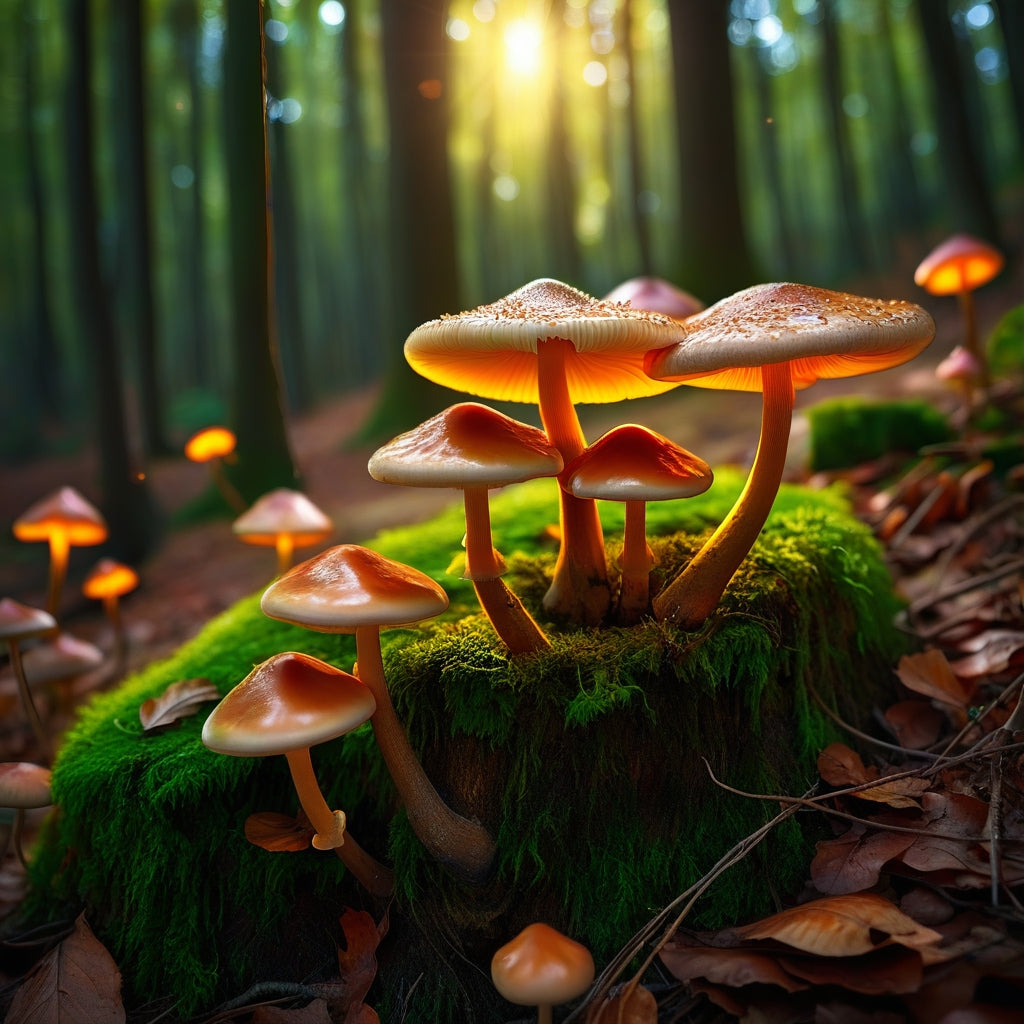
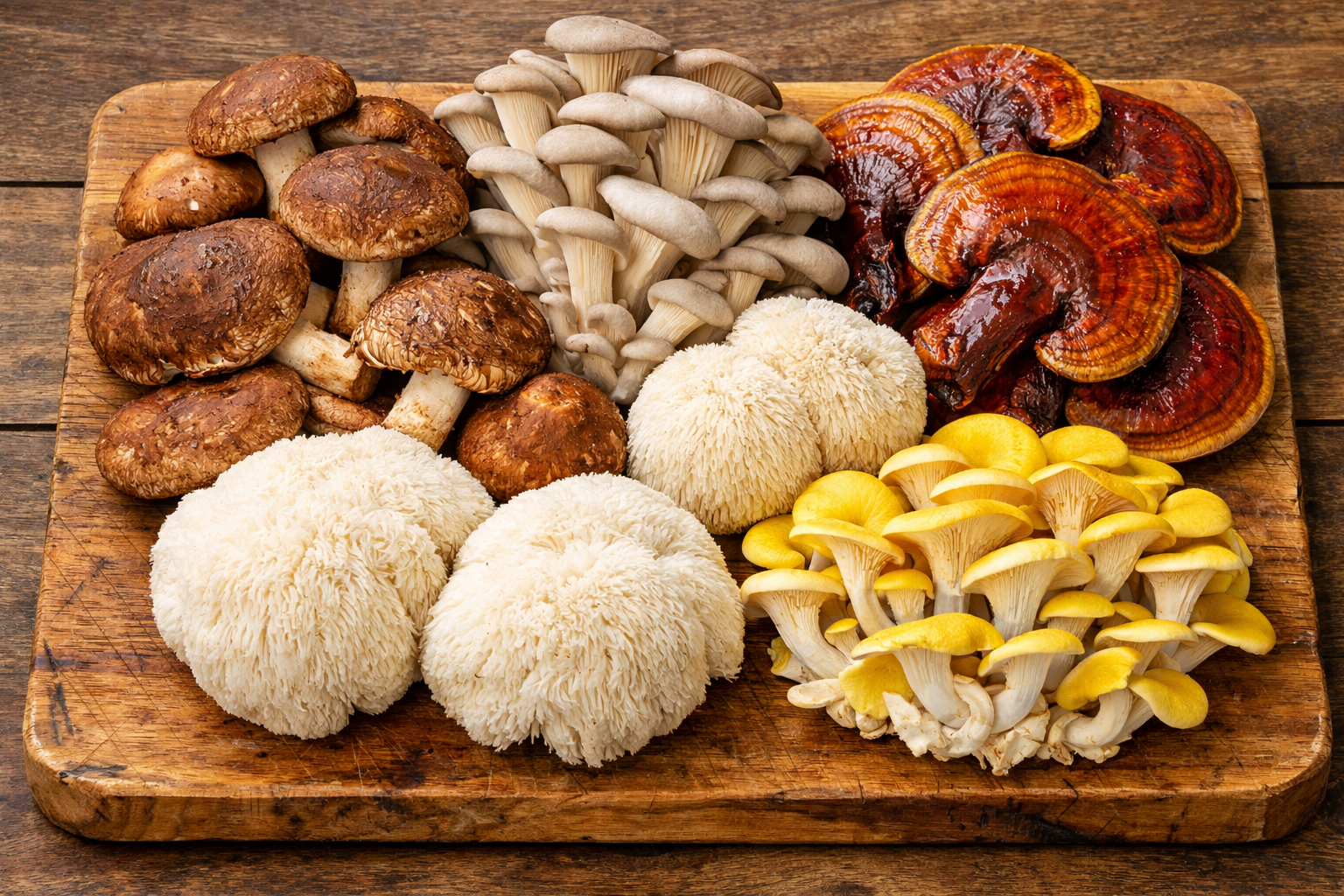
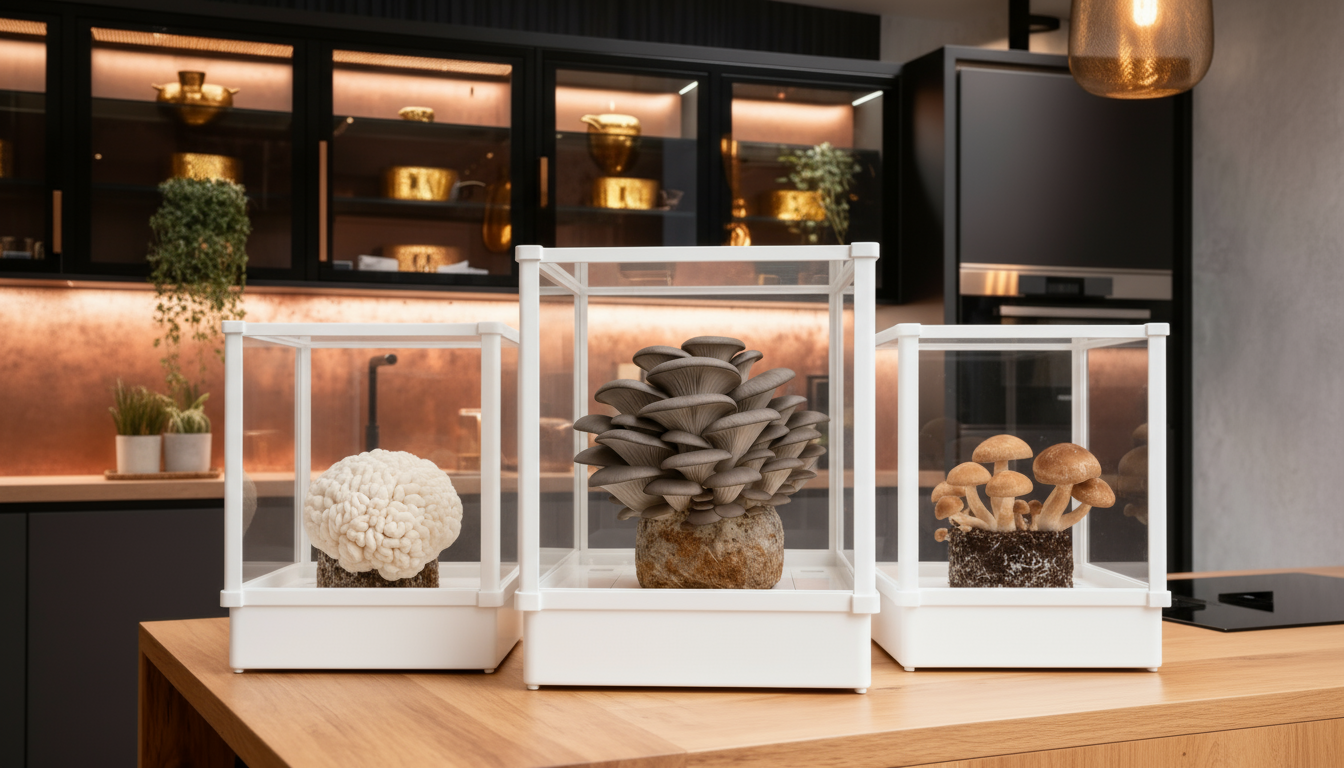
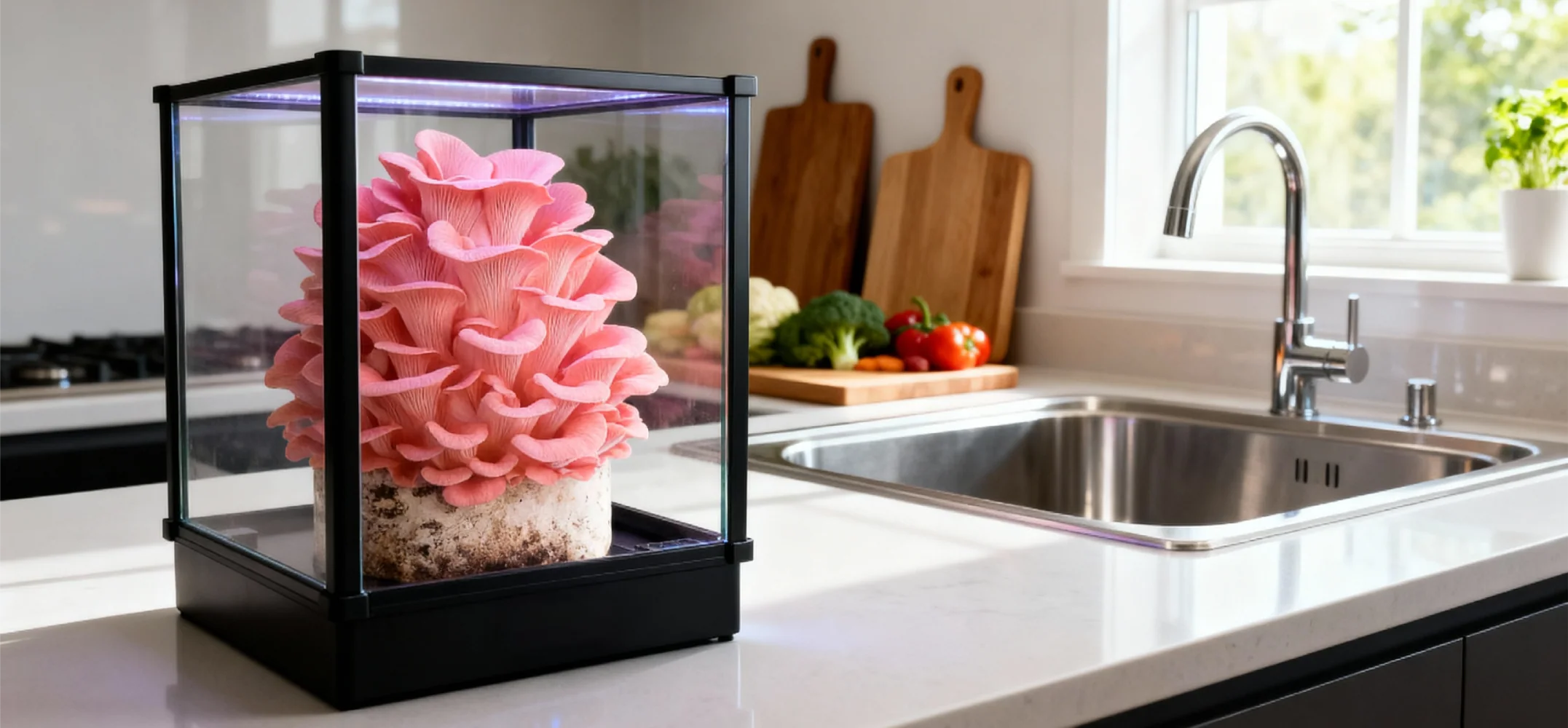
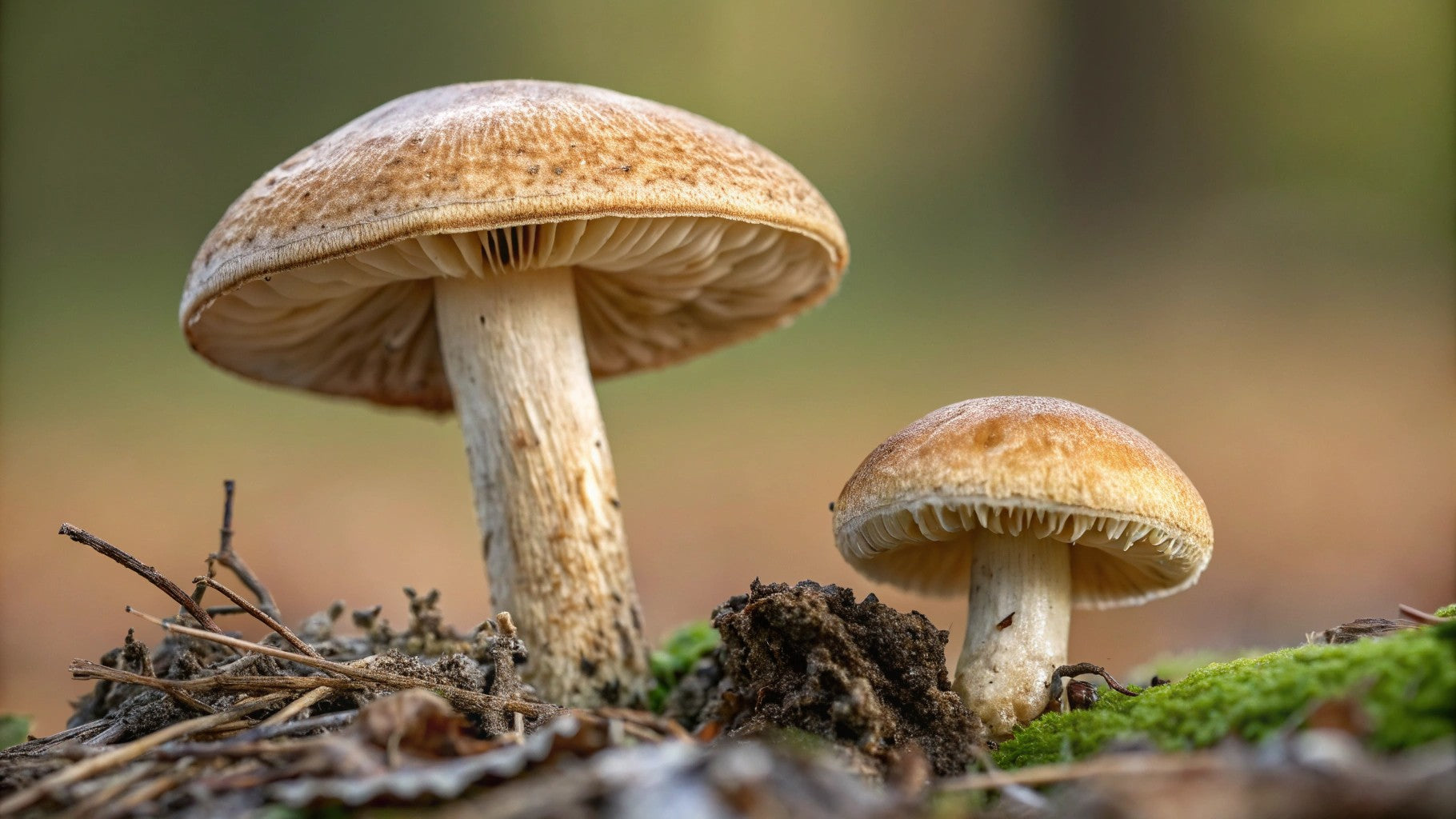
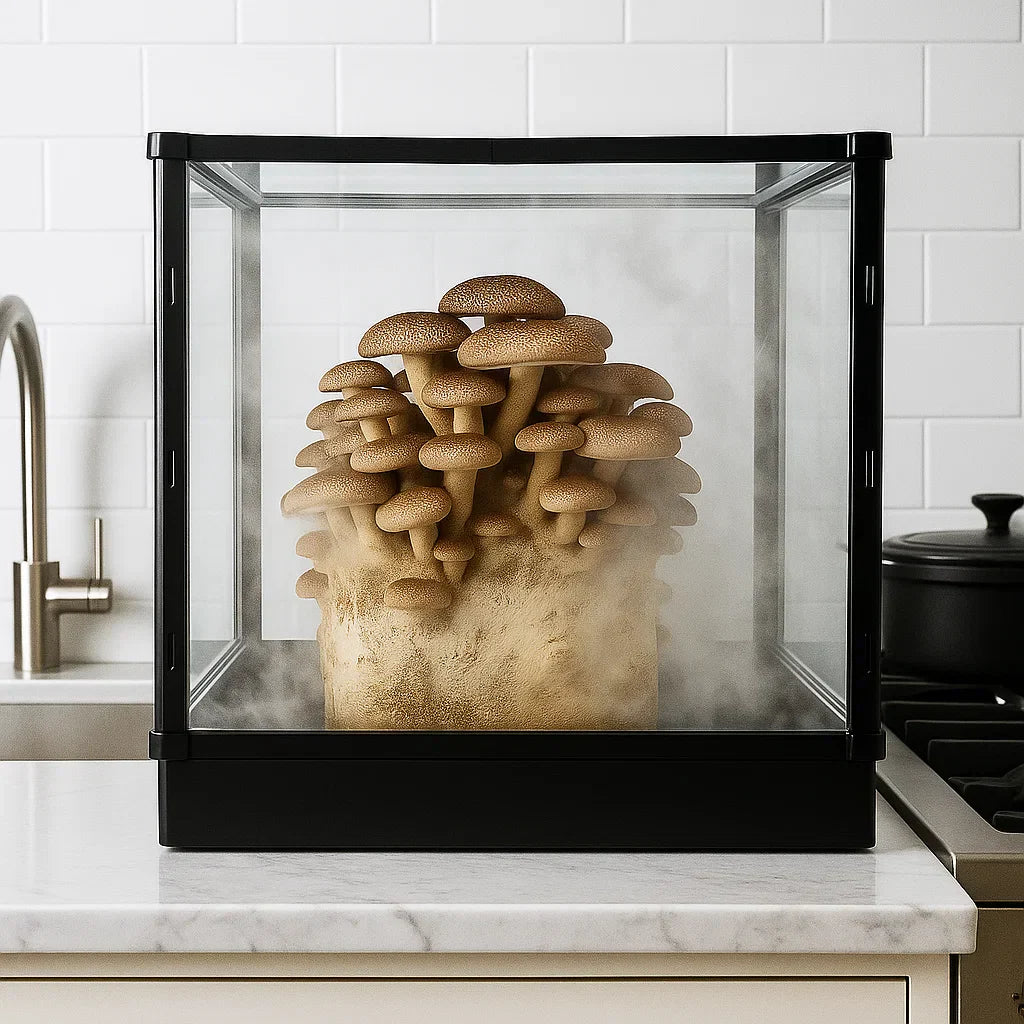
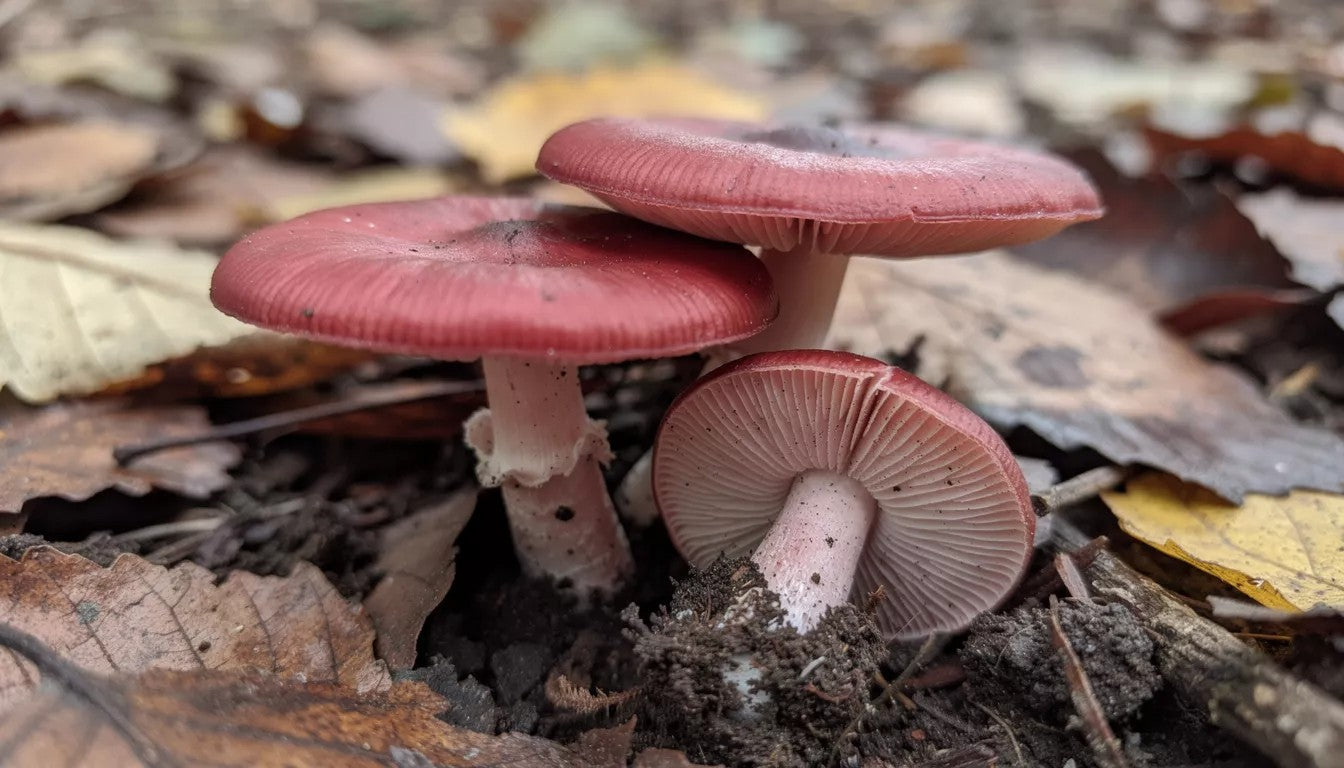






Share:
White Elm Oyster Mushroom: The Complete Guide to Nature's White Gold
How Long Do Mushrooms Last in the Fridge: The Complete Storage and Freshness Guide